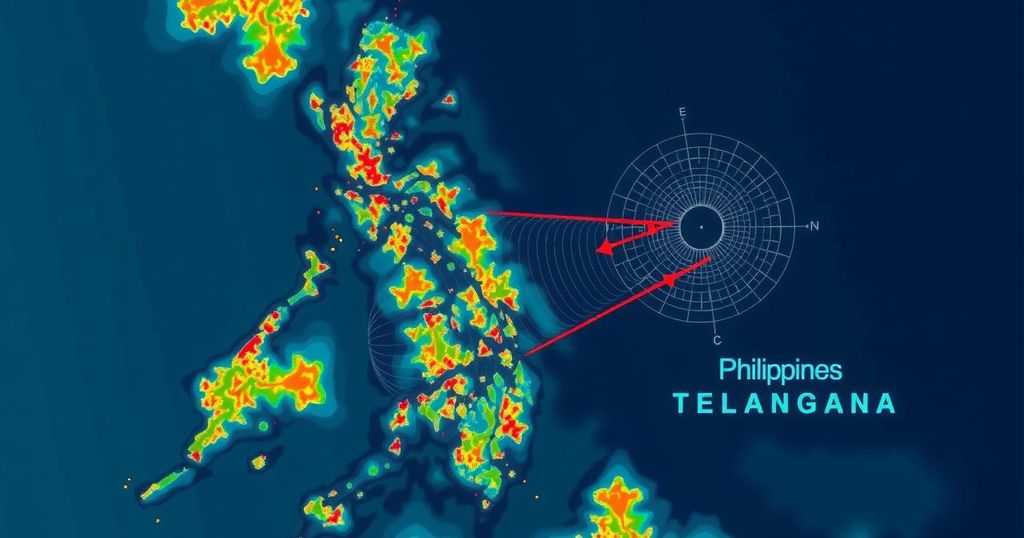World news
“ RING, AFRICA, ASIA, BANGUI, CENTRAL AFRICAN REPUBLIC, EARTHQUAKE, EARTHQUAKES, GERMAN RESEARCH CENTRE FOR GEOSCIENCES, ILOCOS, MULUGU, NATIONAL CENTER FOR SEISMOLOGY, NATURAL DISASTER, NATURAL DISASTERS, PACIFIC “ RING OF FIRE, PHILIPPINES, PHIVOLCS, RESPONSE AND SAFETY MEASURES AUTHORITIES, SHALLOW EARTHQUAKE, TELANGANA
Jamal Robinson
0 Comments
Seismic Activity: Earthquakes in the Philippines and Telangana Reported
A magnitude 5.6 earthquake hit Bangui, Philippines, followed by a 5.3 quake in Mulugu, Telangana. No significant damage has been reported, but authorities are on alert for aftershocks. Both regions face challenges due to their locations along active seismic zones, underscoring the need for preparedness.
A magnitude 5.6 earthquake struck Bangui, a town in the Ilocos province of the Philippines, as reported by the German Research Centre for Geosciences (GFZ). The quake occurred at a shallow depth of 10 kilometers (6.2 miles), raising alarms regarding potential aftershocks and damage to local infrastructure. Fortunately, initial assessments have indicated no significant injuries or damages, although authorities remain vigilant as they monitor the situation closely.
The Philippine Institute of Volcanology and Seismology (PHIVOLCS) has confirmed the earthquake’s occurrence and has issued warnings regarding possible aftershocks. Residents in affected regions have been urged to remain alert and comply with established safety protocols. Emergency teams have been mobilized and are on standby to address any emerging threats resulting from the seismic activity.
Additionally, a separate earthquake of magnitude 5.3 was recorded in Mulugu, Telangana, India, at 7:27 AM today, as reported by the National Center for Seismology. This incident adds to the series of seismic events occurring on both sides of the globe, highlighting the inherent risks that these regions face due to their geological conditions.
The Philippines is situated within the Pacific “Ring of Fire,” a region known for its extensive volcanic activity and earthquakes owing to tectonic plate movements. This geographical reality renders the nation particularly vulnerable to seismic disturbances, necessitating comprehensive preparedness and timely responses to such natural occurrences.
Understanding earthquakes requires acknowledging their geological underpinnings. The Philippines is located in a region prone to seismic activity due to its position within the Pacific “Ring of Fire,” a well-known area characterized by volcanic eruptions and frequent earthquakes. This heightened activity necessitates preparedness and quick response measures by local authorities, particularly in the wake of earthquakes that may lead to aftershocks and infrastructural damage. Moreover, countries like India also experience similar seismic threats, underlining the global nature of earthquake risks.
In summary, the recent earthquakes in the Philippines and Telangana serve as vital reminders of the seismic vulnerabilities that both regions face. Authorities in the affected areas are actively monitoring the situations and have taken requisite safety measures to ensure public readiness. As these seismic events unfold, continued vigilance and preparedness remain essential to mitigate potential risks associated with aftershocks and structural damage.
Original Source: www.newsx.com




Post Comment